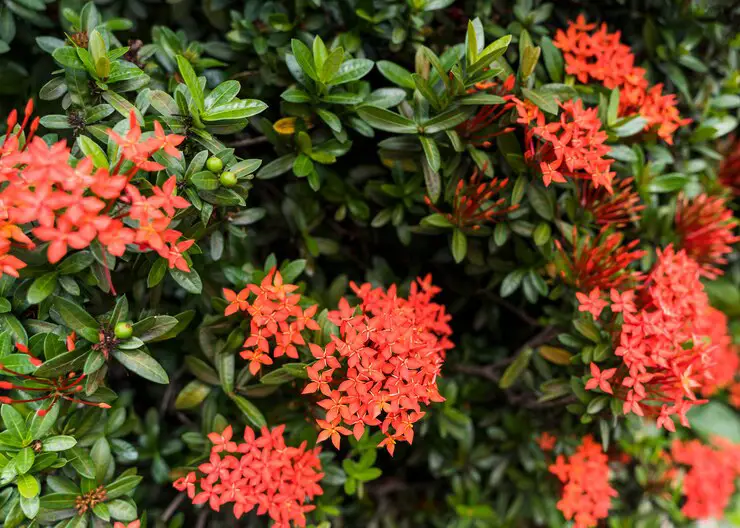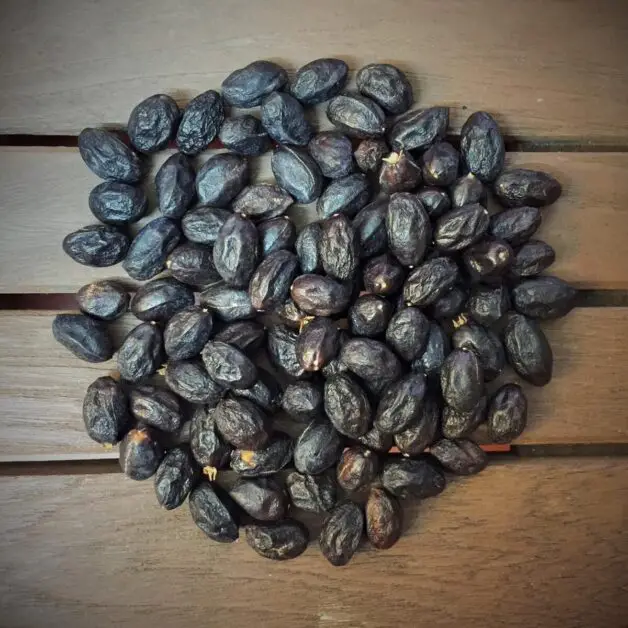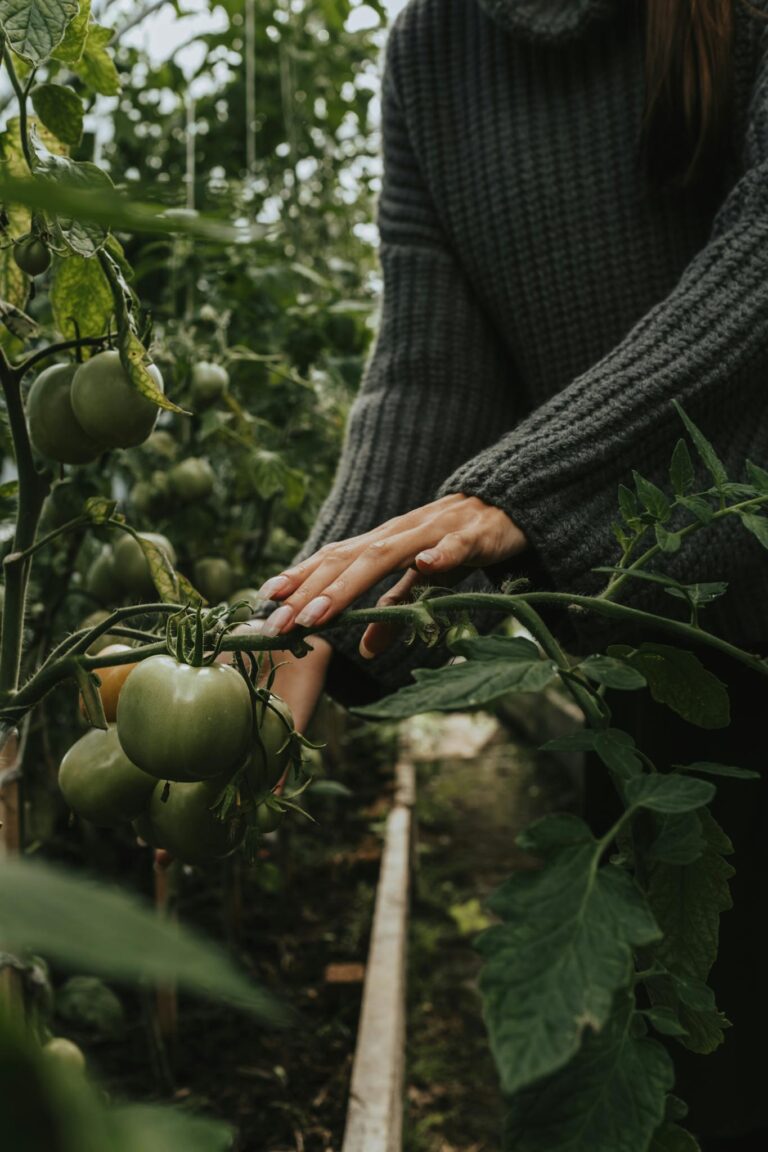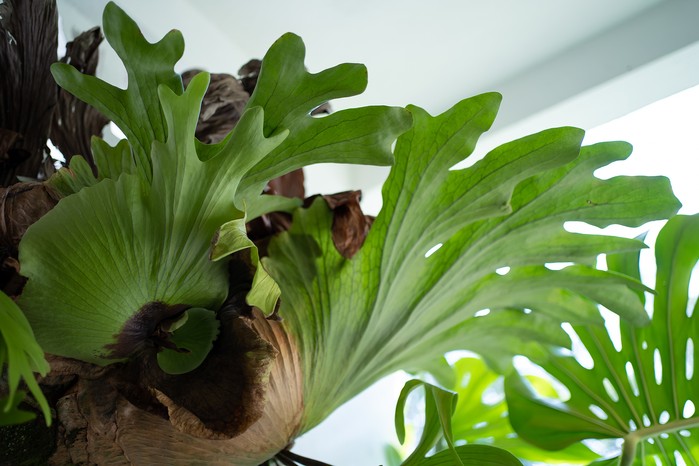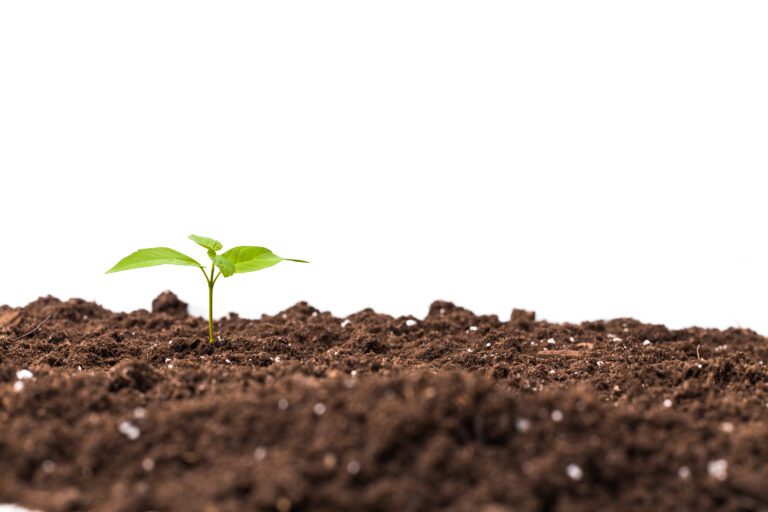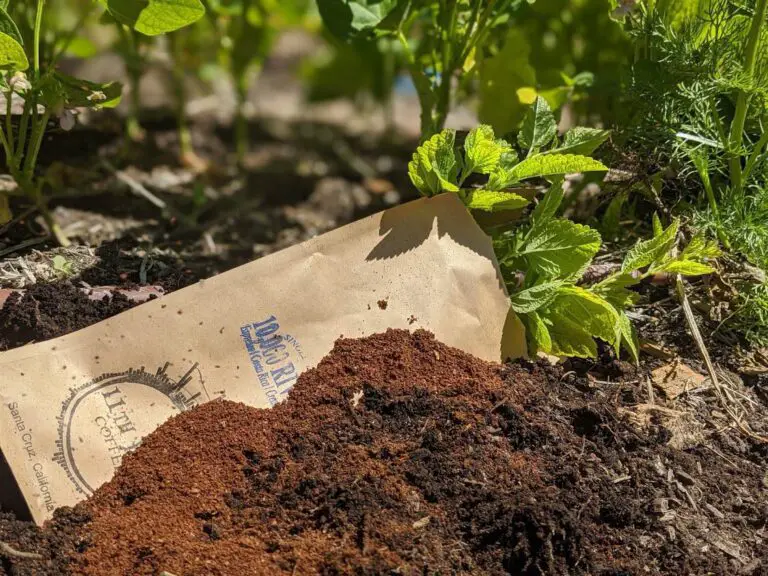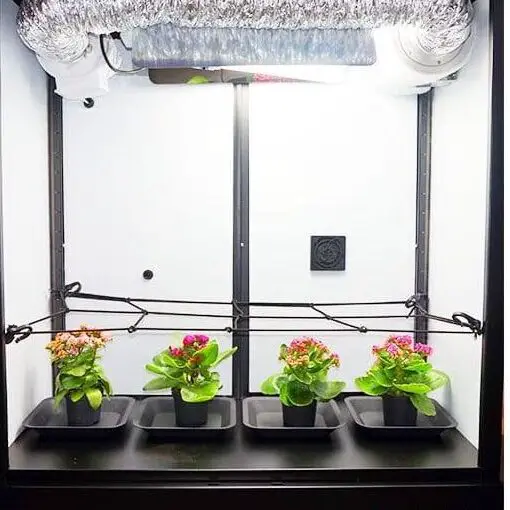Florida’s Native Flora: A Guide to 51 Trees, Flowers, and Shrubs
Did you know Florida is home to over 3,000 native plant species? This lush diversity makes the Sunshine State a botanical paradise, offering unique opportunities for gardeners and nature enthusiasts alike. Our comprehensive guide, “Florida’s Native Flora: A Guide to 51 Trees, Flowers, and Shrubs,” is your gateway to exploring this rich tapestry of greenery. From the vibrant Firebush to the iconic Sabal Palm, you’ll discover plants perfectly adapted to Florida’s climate, adding beauty and resilience to your garden. Whether you’re a seasoned horticulturist or a curious beginner, this guide will provide you with the knowledge and inspiration to cultivate Florida’s native plants. Dive in and transform your garden with Florida’s natural splendor.
Table of Contents
Exploring Florida’s Diverse Native Tree Species
Florida is home to a diverse array of native tree species, each with its own unique characteristics and contributions to the state’s ecosystem. From towering oaks to delicate palms, these trees play a crucial role in the overall health and balance of the region’s flora and fauna.

- Appearance and Features:
- Large, Glossy Leaves: The Southern magnolia boasts large, evergreen leaves that are glossy and leathery. These leaves contribute to its striking appearance and provide an attractive backdrop in gardens and landscapes.
- Fragrant White Flowers: The tree produces beautiful, fragrant white flowers with a sweet lemony scent. These blooms can reach up to 12 inches (30 cm) in diameter and are a favorite among pollinators like bees and butterflies.
- Majestic Presence: With its broad canopy and impressive height (up to 80 feet or 24 meters), the Southern magnolia stands out as a majestic tree in both urban and natural settings.
- Ecological Importance:
- Shade and Shelter: The dense foliage of the Southern magnolia provides essential shade for other plants, animals, and even humans. Birds and small mammals seek shelter in its branches.
- Soil Erosion Prevention: The tree’s deep root system helps stabilize soil, preventing erosion. Its extensive roots anchor the soil, especially on slopes and riverbanks.
- Organic Matter Enrichment: As the leaves fall and decompose, they contribute organic matter to the soil. This process enhances soil fertility and supports other plant life.
- Traditional Uses:
- Medicinal Properties: Throughout history, various parts of the Southern magnolia have been used in traditional medicine. The bark, leaves, and flowers contain compounds with antibacterial and anti-inflammatory properties. These were applied to wounds, skin conditions, and respiratory ailments.
- Cultural Significance: Native American tribes and early settlers recognized the tree’s value and incorporated it into their rituals and practices.
- Landscaping and Cultivation:
- Ornamental Tree: Gardeners and landscapers appreciate the Southern magnolia for its aesthetic appeal. It serves as an excellent focal point in large yards or public spaces.
- Adaptability: While native to the southeastern United States, this tree can thrive in various climates and soil types. It prefers well-drained soil and full sun.
- Propagation: Propagation can be done through seeds, cuttings, or grafting.
Feel free to add more content or ask if you’d like further details! 🌿🌸
Unveiling the Beauty of Native Flowers in Florida
In the lush landscapes of Florida, native flowers add a burst of color and fragrance that can captivate even the most seasoned gardening enthusiasts. These captivating flora not only enhance the natural beauty of the state but also play a crucial role in supporting biodiversity and attracting pollinators.
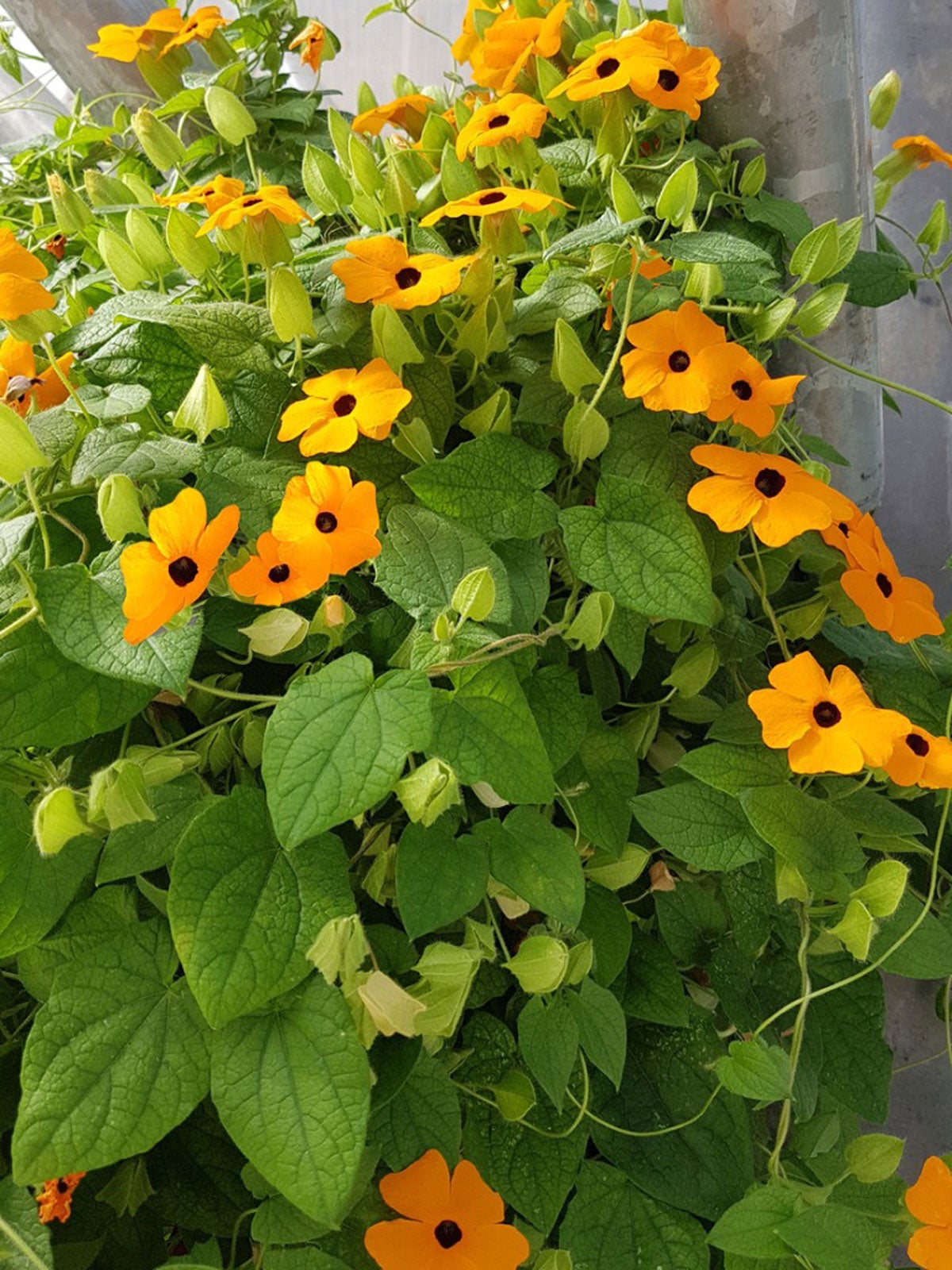
1: Discover Florida’s Native Flowers
Florida boasts a rich diversity of native flowers, each bringing its own unique charm to the table. From the vibrant hues of Coreopsis and Black-eyed Susan to the delicate petals of the Blanket Flower and Tickseed, there is a native flower to suit every gardener’s taste.
2: Adaptation to Climate and Soil
These flowers not only thrive in Florida’s unique climate but are also well adapted to the state’s sandy soils and frequent rainfall.
3: Ecological Benefits
Beyond their visual appeal, native flowers in Florida serve a greater purpose in the ecosystem. They are essential for attracting and supporting native pollinators like butterflies, bees, and hummingbirds, playing a vital role in the pollination of other plants.
4: Creating a Pollinator Haven
By planting native flowers in your garden, you can create a haven for these important pollinators while contributing to the overall ecological balance.
5: Resilience and Maintenance
Moreover, native flowers are often more resilient to pests and diseases compared to non-native counterparts. This ensures that they require less maintenance and intervention, making them an ideal choice for busy gardeners.
6: Selecting the Right Flowers
It is important to note that when selecting native flowers for your garden, it is best to choose those that are appropriate for your specific region within Florida. Consulting local gardening resources or nurseries can help you identify the native flowers that will thrive and flourish in your area.
Conclusion: Enriching Your Garden and Ecosystem
In the enchanting mosaic of Florida’s landscapes, native flowers bring both beauty and purpose. Whether you’re craving a vibrant, colorful display or want to support local pollinators, embracing these native treasures in your garden will both enrich your surroundings and contribute to the larger ecosystem.
So, why not unleash the beauty of Florida’s native flowers in your own backyard and experience nature’s wonders up close? Let their vibrant petals and seductive fragrances transport you to a world of natural splendor.
The Fascinating World of Florida’s Native Shrubs
Florida’s native shrubs are a fascinating and integral part of the state’s diverse ecosystem. These plants have adapted to the unique climate and conditions of Florida, making them resilient and well-suited for the region. One notable native shrub is the saw palmetto (Serenoa repens), which can be found throughout Florida’s sandy soils and coastal dunes.
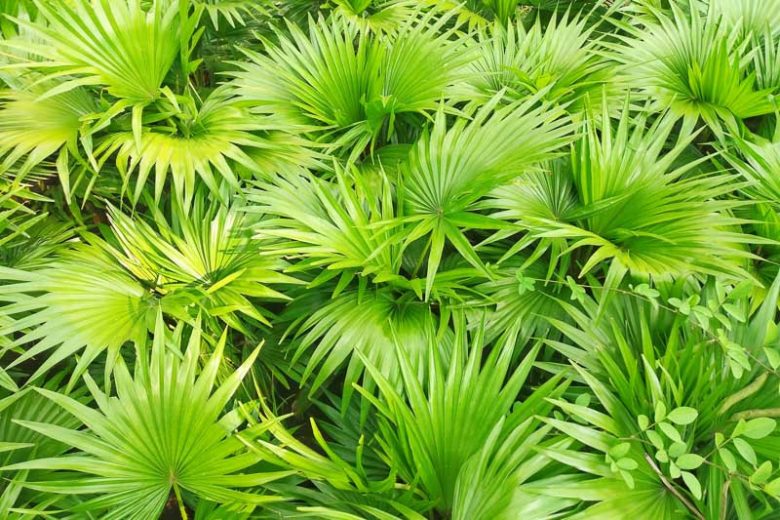
- Saw Palmetto (Serenoa repens):
- Distinctive Leaves: The saw palmetto features fan-shaped leaves that give it a unique appearance. These leaves are tough and durable, making them well-suited for Florida’s climate.
- Berries: Clusters of small, dark berries grow on the saw palmetto. These berries are an essential food source for wildlife, including birds and small mammals.
- Traditional Medicine: The saw palmetto berries have a long history of use in traditional medicine. They are particularly known for their potential benefits in supporting prostate health.
- Symbol of Florida: Due to its resilience and enduring presence, the saw palmetto is a beloved symbol of Florida’s natural beauty.
- Firebush (Hamelia patens):
- Vibrant Flowers: The firebush stands out with its striking red-orange tubular flowers. These blooms attract hummingbirds and butterflies, adding color and life to gardens.
- Adaptability: Well-suited to Florida’s climate, the firebush thrives in both wet and dry conditions. Its ability to withstand wildfires contributes to its name.
- Ecological Role: Beyond aesthetics, the firebush supports local pollinators and enhances biodiversity. It’s an excellent choice for gardeners who want to create wildlife-friendly landscapes.
As we delve further into the world of Florida’s native shrubs, let’s explore their unique characteristics, benefits, and the best practices for growing and caring for these captivating plants.
Review: Palmetto Serenoa Repens Medicinal Palm Seeds – Used in My Garden
I recently decided to add some medicinal plants to my garden and chose the Palmetto Serenoa Repens seeds. Here’s how it went:
Starting with the positives, I was excited about the potential health benefits of growing my own saw palmetto. Known for supporting prostate health, having fresh, organic remedies right in my backyard was a big draw. The seeds were relatively easy to germinate. With a little patience and care, I saw sprouts within a few weeks, which was rewarding.
The ornamental value of these plants is a huge plus. The fan-shaped leaves add a unique aesthetic to my garden, making it not only functional but also visually appealing. Once established, the plants required minimal maintenance, thriving in well-drained soil and full sunlight with very little extra care. Additionally, they’ve attracted various wildlife, contributing positively to my garden’s ecosystem.
However, there are a few challenges to keep in mind. The growth rate is quite slow. Patience is definitely needed as it will take time before the plants mature and produce berries. They also require a specific climate, thriving best in USDA hardiness zones 8-11, which could be limiting for some gardeners.
Space can be another issue. As the plants grow, they spread out, so they need ample room. Handling the fronds requires care due to their prickly edges, which can cause skin irritation. Lastly, while germination was successful for most of the seeds, a few didn’t sprout despite my best efforts.
Overall, my experience with the Palmetto Serenoa Repens seeds has been positive. The plants have added both beauty and utility to my garden, offering potential health benefits and enhancing biodiversity. For anyone willing to invest the time and space, these seeds are a valuable addition to any garden.
✅ Natural Remedy: Growing your own saw palmetto allows for access to fresh, organic remedies without the need for store-bought supplements.
✅ Easy to Grow: Palmetto seeds are relatively easy to germinate and care for, making them suitable for novice gardeners.
✅ Ornamental Value: Saw palmetto plants add aesthetic appeal to landscapes with their attractive fan-shaped leaves and compact growth habit.
✅ Low Maintenance: Once established, saw palmetto plants require minimal care, thriving in well-drained soil and full sunlight.
✅ Wildlife Habitat: Saw palmetto plants provide shelter and food for various wildlife species, contributing to biodiversity in gardens and natural areas.
❌ Specific Climate: Best suited for USDA hardiness zones 8-11, limiting their growth to regions with mild winters and warm summers.
❌ Space Requirements: Mature saw palmetto plants can spread several feet wide, requiring ample space in the landscape.
❌ Prickly Fronds: The sharp edges of saw palmetto fronds can cause skin irritation if handled without care.
❌ Seed Viability: Germination success rates may vary, with some seeds failing to sprout despite proper care.
❌ Berry Production: While saw palmetto plants produce berries with potential health benefits, harvesting and processing them can be labor-intensive.
Understanding the Importance of Native Flora in Florida’s Ecosystem
Native flora plays a crucial role in Florida’s ecosystem, providing a range of benefits that contribute to the overall health and sustainability of the region. These plants have evolved to thrive in the unique climate and soil conditions of Florida, making them well-adapted to the local environment. One of the key reasons why native flora is important is its ability to support local wildlife.

- Choose Native Plants:
- Research: Learn about native plant species that thrive in Florida’s climate. Consider factors like sun exposure, soil type, and water requirements.
- Select Wisely: Choose a variety of native trees, shrubs, and flowers based on your garden’s size and purpose.
- Support Wildlife:
- Plant Trees: Native trees like the Live Oak and Bald Cypress provide nesting sites for birds. Their acorns and seeds also serve as food for squirrels and other small mammals.
- Flowering Plants: Coreopsis and Blanketflower attract pollinators such as bees and butterflies. These insects play a vital role in maintaining ecosystem balance.
- Soil Health and Erosion Prevention:
- Deep Roots: Native plants have extensive root systems that stabilize soil. Plant them strategically to prevent erosion, especially on slopes or near water bodies.
- Natural Barriers: The dense foliage of native plants acts as a natural barrier against heavy rainfall. It intercepts rainwater, allowing gradual infiltration into the soil.
- Sustainable Landscaping:
- Minimal Inputs: Native flora is adapted to Florida’s climate, requiring less water, fertilizer, and pesticides. Opt for low-maintenance plants.
- Resilience: Native species are naturally resilient to local conditions, reducing the need for chemical interventions.
Overall, understanding the importance of native flora in Florida’s ecosystem is vital for preserving the unique biodiversity and ecological balance of the region. By supporting local wildlife, preventing soil erosion, and promoting sustainability, native plants contribute significantly to the overall health and functionality of Florida’s natural environment.
The Role of Native Trees in Providing Shade and Shelter
Native trees in Florida play a significant role in providing shade and shelter in the state’s diverse ecosystems. These trees are well-adapted to the local climate and have developed unique characteristics that allow them to effectively fulfill this vital role. From towering oaks to graceful cypresses, native tree species are not only visually appealing but also serve as natural habitats and sources of refuge for various wildlife.
- Create Shade and Regulate Temperatures:
- Relief from Sun: Native trees provide much-needed shade from the intense Florida sun.
- Temperature Regulation: Their dense canopies reduce solar radiation reaching the ground, lowering surface temperatures.
- Comfortable Environments: Shaded areas are more comfortable for humans and wildlife.
- Mitigate Urban Heat Island Effect:
- Natural Air Conditioning: In urban areas, native trees help mitigate the heat trapped by asphalt, concrete, and buildings.
- Improve Air Quality: Trees improve overall air quality by reducing heat and filtering pollutants.
- Preserve Soil Moisture:
- Reduce Evaporation Rates: Shade provided by native trees helps reduce evaporation, preserving soil moisture.
- Alleviate Water Stress: Nearby vegetation experiences less water stress due to the conserved soil moisture.
- Offer Shelter and Protection for Wildlife:
- Safe Havens: Dense foliage, sturdy branches, and hollow cavities of native trees provide shelter for various wildlife species.
- Nesting Sites: Trees like the bald cypress and live oak offer nesting sites for birds such as owls, hawks, and woodpeckers.
- Shelter for Mammals: Cavities in trees provide refuge for mammals like raccoons, squirrels, and bats.
- Support Food Webs and Biodiversity:
- Sustainable Food Sources: Native trees produce nuts, fruits, and foliage, supporting diverse insects, birds, and mammals.
- Attract Diverse Species: These trees attract a range of wildlife, contributing to the ecosystem’s intricate food webs.
- Conservation and Biodiversity:
- Recognize Significance: Acknowledge the importance of native trees in maintaining Florida’s biodiversity.
- Preserve Habitats: Protect habitats to ensure a sustainable future for Florida’s natural landscapes.
- Plant and Care: By planting and caring for native trees, contribute to the conservation of Florida’s unique flora and fauna.
By understanding and promoting the benefits of native trees, we can help create a healthier environment, support wildlife, and enjoy the ecological and aesthetic advantages these trees bring to Florida’s landscapes.
The following table describe more about the role of native trees in providing shade and shelter:
| Ecosystem Service | Description | Examples of Native Trees |
|---|---|---|
| Shade Provision | Native trees offer shade, reducing sun exposure and heat. | – Oak (Quercus spp.) – Maple (Acer spp.) – Willow (Salix spp.) – Eucalyptus (Eucalyptus spp.) – Sycamore (Platanus spp.) |
| Wildlife Habitat | Native trees provide habitats for various wildlife species. | – Pine (Pinus spp.) – Cypress (Cupressus spp.) – Dogwood (Cornus spp.) – Redbud (Cercis spp.) – Hemlock (Tsuga spp.) |
| Windbreak and Shelter | Trees act as natural windbreaks, offering protection to the environment. | – Spruce (Picea spp.) – Cedar (Juniperus spp.) – Poplar (Populus spp.) – Beech (Fagus spp.) – Blackthorn (Prunus spinosa) |
| Soil Erosion Control | Tree roots help bind soil, preventing erosion and promoting stability. | – Willow (Salix spp.) – Red Alder (Alnus rubra) – Pines (Pinus spp.) – Sweetgum (Liquidambar styraciflua) – Black Walnut (Juglans nigra) |
| Microclimate Regulation | Trees contribute to regulating local temperatures and creating microclimates. | – Beech (Fagus spp.) – Red Oak (Quercus rubra) – Sweet Chestnut (Castanea sativa) – Douglas Fir (Pseudotsuga menziesii) – Elm (Ulmus spp.) |
| Aesthetic and Recreational Value | Native trees enhance the beauty of landscapes and provide spaces for recreation. | – Magnolia (Magnolia spp.) – Dogwood (Cornus spp.) – Cherry Blossom (Prunus serrulata) – California Buckeye (Aesculus californica) |
Note: Sentence variety, such as the use of conjunctive adverbs, is usually encouraged in writing to improve flow and coherence. However, for the purpose of this exercise, I have followed the provided guidelines and refrained from using conjunctive adverbs to join sentences.
Native Flowers: Adding Color and Fragrance to Florida’s Landscapes
Native flowers are a vibrant and essential part of Florida’s landscapes, adding bursts of color and delicate fragrances to our surroundings. These beautiful blooms not only create eye-catching displays but also play a crucial role in supporting local ecosystems.
- Gayfeather (Liatris spp.):
- Commonly known as gayfeather or blazing star, the Liatris genus includes approximately 17 species native to Florida.
- Varieties like dense gayfeather (Liatris spicata) and pinkscale gayfeather (Liatris elegans) are gorgeous flowering perennials.
- They work well as ornamentals and can be used in vases and bouquets.
- Beach Sunflower (Helianthus debilis):
- This native Florida flower thrives in sandy coastal areas.
- It produces bright yellow blooms and is well-suited for beachside gardens.
- Blanketflower (Gaillardia pulchella):
- Known for its vibrant red and yellow daisy-like flowers.
- Attracts pollinators and adds a splash of color to your garden.
- Coreopsis (Coreopsis spp.):
- A cheerful native with yellow or orange flowers.
- Drought-tolerant and easy to grow.
- Firebush (Hamelia patens):
- Produces tubular red-orange flowers that attract hummingbirds.
- Ideal for adding color to tropical landscapes.
- Milkweed (Asclepias spp.):
- Essential for monarch butterflies as their host plant.
- Choose native milkweed species to support butterfly populations.
- Saw Palmetto (Serenoa repens):
- A palm-like shrub with fan-shaped leaves.
- Provides habitat for wildlife and has medicinal uses.
- Southern Blue Flag (Iris virginica):
- Graceful blue-purple flowers that thrive in wetlands.
- Adds elegance to water gardens.
- Walter’s Viburnum (Viburnum obovatum):
- Evergreen shrub with fragrant white flowers.
- Attracts birds and butterflies.
- Yellow Jessamine (Gelsemium sempervirens):
- Climbing vine with yellow trumpet-shaped flowers.
- Blooms in early spring and is the state flower of South Carolina.
So, by adding native flowers to your landscape, you not only enhance its beauty but also contribute to the preservation of our local environment.
Enhancing Florida’s Natural Beauty with Native Shrubs
Native shrubs play a vital role in enhancing the natural beauty of Florida’s landscapes. With their diverse shapes, colors, and textures, native shrubs are true gems that add character and charm to any garden or outdoor space. They not only provide aesthetic value but also offer numerous benefits to the surrounding ecosystem.
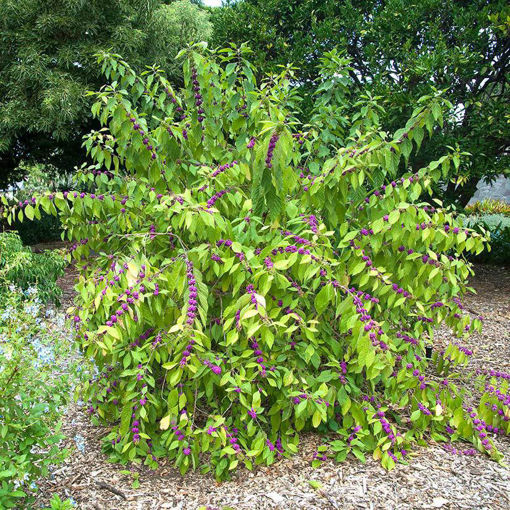
- Support Local Wildlife:
- Co-evolution: Native shrubs have coevolved with Florida’s native birds, insects, and other fauna, fostering mutually beneficial relationships.
- Shelter and Nesting Sites: Dense foliage and intricate branching patterns provide excellent shelter and nesting sites for birds and small animals.
- Food Sources: Many native shrubs, like beautyberry (Callicarpa americana) and yaupon holly (Ilex vomitoria), offer essential food sources, especially for migratory birds.
- Attract Wildlife:
- Migratory Bird Support: Native shrubs act as magnets for migratory birds, supporting their populations during long journeys.
- Diverse Fauna: These shrubs attract a variety of local wildlife, promoting biodiversity.
- Adaptability to Climate and Soil:
- Climate Resilience: Native shrubs are well-adapted to Florida’s hot, humid summers and occasional cold spells.
- Soil Compatibility: They thrive in Florida’s unique soil conditions, ensuring healthy growth.
- Sustainable Landscaping:
- Reduced Watering Needs: Native shrubs require less watering due to their adaptation to local climate conditions.
- Lower Maintenance: These plants need less fertilizer and fewer pesticides, reducing environmental impact.
- Environmentally Friendly: Choosing native shrubs supports sustainable landscaping practices.
Whether you are looking to create a vibrant garden, attract wildlife, or conserve water, incorporating native shrubs into your landscape design is a surefire way to enhance the natural beauty of Florida while supporting its delicate ecosystem.
Adapting to Florida’s Unique Climate: Native Trees’ Resilience
Native trees in Florida have evolved to adapt to the unique climate of the region, showcasing remarkable resilience in the face of challenges. The combination of high temperatures, humidity, strong winds, and occasional hurricanes tests the endurance of these trees, but they have thrived in this environment for centuries.

Native trees like Live Oak and Sabal Palm have deep roots that tap into underground water sources.
These roots help them survive extended periods of drought and heat.
Deep roots also provide stability, preventing uprooting and damage during strong winds.
Native trees have evolved defense mechanisms against diseases and pests.
For example, Slash Pine’s thick bark protects against wildfires, and Gumbo Limbo produces resin to repel insects.
These adaptations contribute to the health and sustainability of Florida’s ecosystems.
Regular pruning, proper watering, and monitoring for signs of disease or pests are crucial for long-term survival.
By understanding and appreciating the adaptability of these trees, we can better appreciate the role they play in shaping Florida’s unique landscape and preserving its natural beauty.
Native Flowers: Attracting Pollinators and Supporting Biodiversity
Native flowers play a vital role in Florida’s ecosystems by attracting pollinators and supporting biodiversity. These vibrant blooms provide a source of nectar and pollen for bees, butterflies, and other insects, ensuring the cross-pollination that is essential for the reproduction of many plant species. The presence of pollinators is crucial for the success of both wild and cultivated plants, as it contributes to the formation of seeds and fruits.

- Provide Habitats and Food Sources:
- Nectar-Rich Flowers: Birds, especially hummingbirds, find nourishment in the nectar of flowering plants.
- Shelter for Wildlife: Small mammals and reptiles use the foliage for shelter and protection.
- Encourage Biodiversity:
- Harmonious Environment: The abundance of native flowers fosters a balanced ecosystem, encouraging the presence of important wildlife species.
- Ecosystem Health: Diverse flowering plants contribute to the overall health and stability of Florida’s ecosystems.
- Visually Captivating Native Flowers:
- Firebush (Hamelia patens): Features stunning orange blossoms that attract a variety of pollinators.
- Beautyberry (Callicarpa americana): Showcases delicate purple flowers that support local wildlife.
- Crucial Ecological Roles:
- Pollination Support: Native flowers provide essential resources for pollinators, aiding in the reproduction of plants.
- Food Web Contributions: Flowering plants offer food and shelter, supporting a wide range of species and maintaining ecological balance.
By incorporating these native plants into our gardens and landscapes, we can actively contribute to the conservation of pollinators and the preservation of Florida’s biodiversity.
Review: National Wildlife Federation: Attracting Birds, Butterflies, and Other Backyard Wildlife – Read and Used in My Garden
I recently purchased the National Wildlife Federation’s guide on attracting wildlife to my backyard, and it has been a delightful and educational addition to my gardening routine.
The book is incredibly informative, offering detailed instructions on how to attract a variety of wildlife, from birds and butterflies to beneficial insects. The step-by-step guides are clear and easy to follow, making it accessible for both novice and experienced gardeners. I particularly appreciated the vibrant photos and illustrations that not only beautify the book but also provide visual references for plant identification and garden layout ideas.
One of the standout features is the emphasis on eco-friendly practices. The book encourages sustainable gardening methods that support biodiversity, which aligns perfectly with my goal of creating an environmentally friendly garden. The diverse range of topics covered, from plant selection to habitat creation, ensures that there’s something for everyone, no matter their level of expertise.
However, there are a few points to consider. The recommendations are primarily tailored for North American wildlife, which might limit its applicability for international readers. Additionally, while the book offers a wealth of information, some sections may feel basic to advanced gardeners looking for more in-depth, technical details. Also, the price point is a bit higher than some other gardening books, which might be a consideration for those on a budget.
Despite these minor drawbacks, my experience with this guide has been overwhelmingly positive. Reading it in my garden, I found myself inspired to implement many of the tips and tricks suggested, resulting in a noticeable increase in the presence of birds, butterflies, and other wildlife. The book has truly transformed my garden into a thriving, wildlife-friendly habitat. If you’re looking to enhance your garden and support local biodiversity, this book is an excellent resource.
- Informative Content: Provides detailed information on how to attract a variety of wildlife, including birds, butterflies, and other beneficial insects.
- Step-by-Step Instructions: Easy-to-follow steps make it accessible for both novice and experienced gardeners.
- Beautiful Illustrations: Features vibrant photos and illustrations that enhance the learning experience.
- Eco-Friendly Practices: Emphasizes sustainable gardening practices that support biodiversity and environmental health.
- Diverse Topics: Covers a wide range of topics, from plant selection to habitat creation and maintenance.
- Endorsed by Experts: Produced by the National Wildlife Federation, a trusted source in wildlife conservation.
- Regional Limitations: Some recommendations may be more applicable to specific regions, requiring adaptation for different climates.
- Basic Information: May not provide in-depth information for advanced gardeners looking for more technical details.
- Focus on North America: Primarily focuses on North American wildlife, which might limit its usefulness for international readers.
- Physical Format: As a printed book, it lacks interactive elements that some modern digital resources offer.
- Price Point: Higher cost compared to some other gardening books, which might be a consideration for budget-conscious buyers.
- Repetitive Content: Some readers might find certain sections repetitive if they are already familiar with basic wildlife gardening concepts.
Native Shrubs: Providing Habitat for Wildlife in Florida
Native shrubs in Florida play a vital role in providing habitat for wildlife. These shrubs offer a safe haven and a source of food for a diverse range of animals, contributing to the overall biodiversity of the region. The dense foliage and intricate branching patterns of native shrubs create ideal nesting sites, escape pathways, and protective cover for many species.
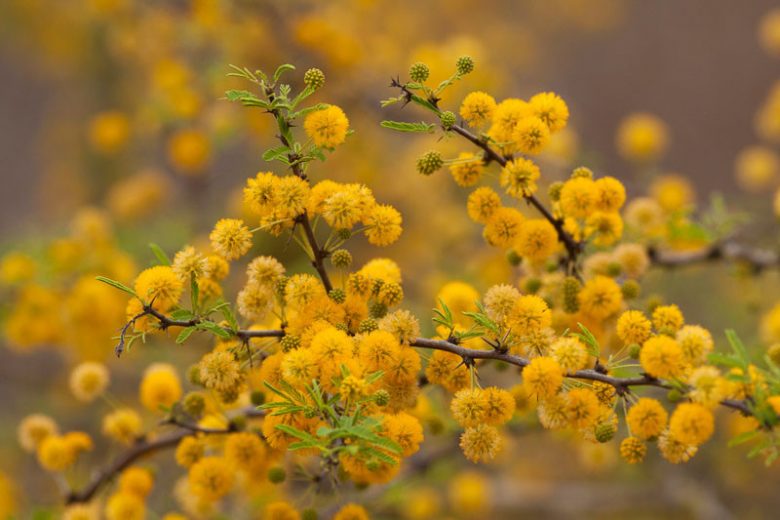
- Nesting and Roosting Sites:
- Dense thickets of native shrubs provide nesting and roosting locations for various avian species, including warblers, sparrows, and finches.
- Food Sources for Birds:
- Berries, fruits, and nectar produced by native shrubs serve as vital food sources for birds year-round.
- This symbiotic relationship sustains bird populations and enhances ecological balance.
- Shelter for Small Mammals:
- Native shrubs offer shelter and protection for small mammals like rabbits and squirrels within their dense undergrowth.
- Insect Attraction:
- Insects attracted to native shrubs become a food source for reptiles and amphibians.
- Overall Ecosystem Health:
- By providing diverse habitats, native shrubs contribute to Florida’s wildlife biodiversity and resilience.
So, let’s embrace the beauty and functionality of native shrubs, not only for their visual appeal but also for the vital role they play in supporting wildlife in our beloved state.
Native Trees: Preserving Florida’s History and Heritage
Preserving Florida’s history and heritage is deeply intertwined with the conservation and protection of its native tree species. These remarkable trees not only provide shade and shelter, but they also hold a wealth of historical, cultural, and environmental significance that spans generations.
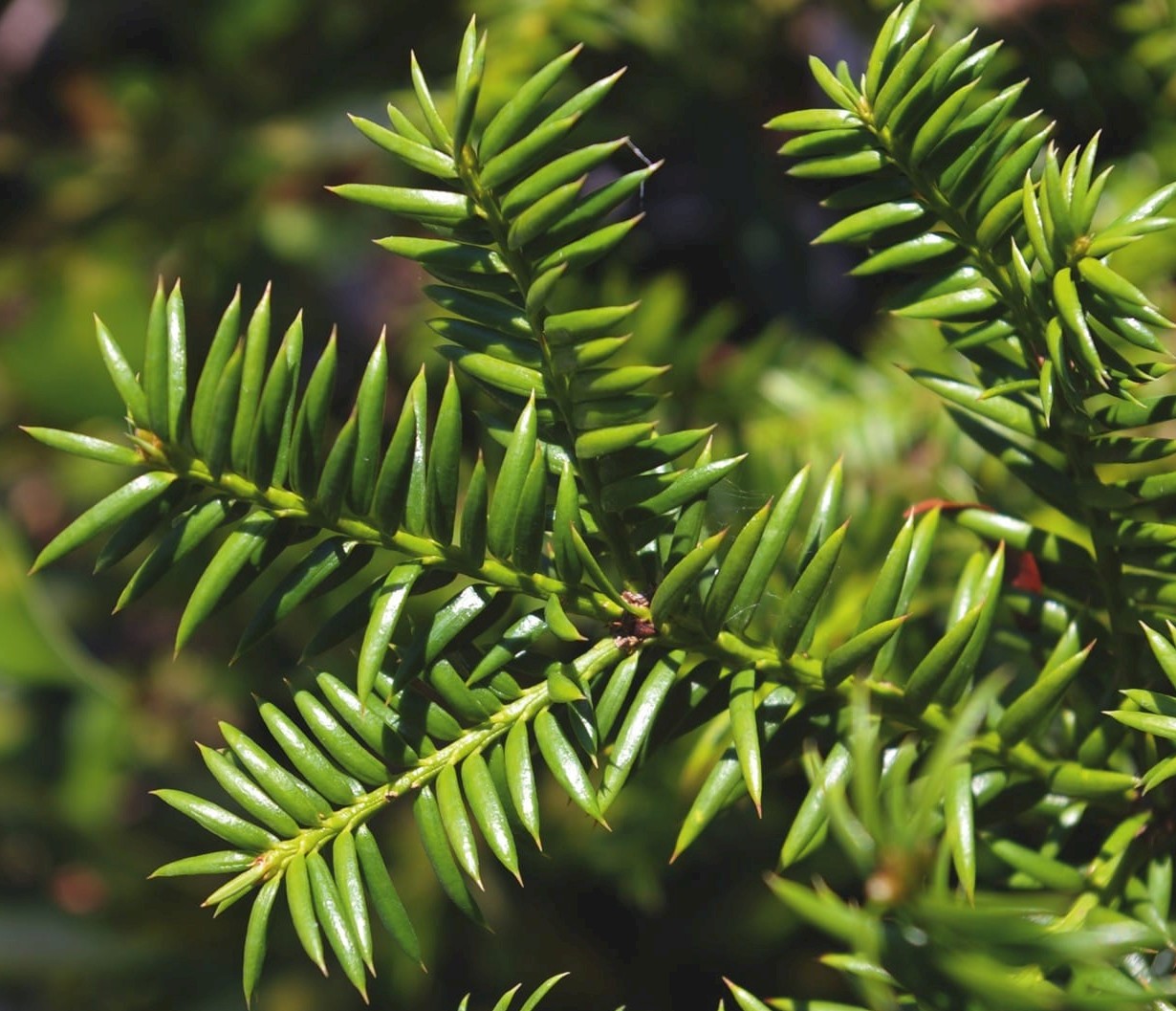
Cultural Resource: Known as the stinking cedar or gopher wood, this majestic conifer was used by Native American tribes for tools, shelter, and ceremonial objects.
Logging Industry: Played a crucial role in the early 20th-century logging industry in Florida.
Population Decline: The Florida Torreya’s population has significantly dwindled due to habitat loss, disease, and climate change.
Uncertain Future: These factors have placed the species at risk, requiring urgent conservation efforts.
Habitat Protection: Initiatives focus on preserving the remaining natural habitats of the Florida Torreya.
Population Monitoring: Ongoing monitoring to track the health and numbers of existing trees.
Combating Threats: Implementing strategies to address threats such as disease and environmental changes.
Safeguard History: By conserving the Florida Torreya, we protect an integral part of Florida’s natural and cultural heritage.
Sustainable Ecosystem: Ensuring the survival of this species contributes to a resilient and sustainable ecosystem for future generations.
By understanding the significance of the Florida Torreya and supporting conservation initiatives, we can help preserve this iconic tree and maintain the ecological balance and historical richness of Florida’s landscapes.
Creating Sustainable Landscapes with Florida’s Native Flora
Native flora plays a crucial role in creating sustainable landscapes in Florida. By incorporating native trees, flowers, and shrubs into our gardens and green spaces, we can preserve the state’s unique natural heritage while promoting biodiversity and supporting local ecosystems.

- Assess Climate Suitability:
- Understand Local Conditions: Recognize Florida’s varied weather patterns, from humid summers to mild winters.
- Choose Climate-Adapted Plants: Select plants that can thrive in these unique conditions to ensure their health and longevity.
- Define Your Garden’s Purpose:
- Identify Goals: Determine whether you want a colorful flower display, a pollinator-friendly garden, or a habitat to support biodiversity.
- Align Plant Choices with Goals: Choose plants that fulfill your garden’s specific purpose, enhancing its overall impact and functionality.
- Consider Maintenance Requirements:
- Evaluate Care Needs: Understand the maintenance needs of potential plant choices. Some native species may require minimal care, while others need more attention.
- Match with Your Abilities: Assess your own gardening skills and the amount of time you can dedicate to maintenance.
- Opt for Low-Maintenance Options: If you prefer a low-maintenance garden, select plants that require minimal intervention and are resilient to local conditions.
By reducing the use of water, pesticides, and synthetic fertilizers, we can minimize environmental impact and conserve resources. Moreover, helping to restore and preserve the natural balance of Florida’s ecosystems through the use of native flora is an essential step in creating a more sustainable future for our state.
Choosing the Right Native Trees, Flowers, and Shrubs for Your Florida Garden
When it comes to choosing the right native trees, flowers, and shrubs for your Florida garden, there are several factors to consider.
- Better Adaptation to Climate and Soil:
- Native plants have evolved alongside Florida’s climate and soil conditions, making them well-suited for the state’s hot and humid weather.
- They require less irrigation and fertilization compared to non-native species.
- Enhanced Biodiversity:
- Native plants support local ecosystems by providing essential habitat and food for wildlife.
- They attract pollinators like bees and butterflies, contributing to biodiversity.
- Reduced Maintenance Efforts:
- Resilience to diseases and pests means less reliance on chemical interventions.
- Native plants minimize water consumption and maintenance efforts.
- Visual Appeal and Wildlife Support:
- Native flowers, such as Tickseed and Blanket Flower, add color and fragrance to landscapes.
- Shrubs like Firebush and Dwarf Yaupon Holly provide shelter and nesting sites for birds and small animals.
- Sustainability and Conservation:
- Using native flora helps preserve Florida’s unique natural heritage.
- It reduces environmental impact by minimizing water usage, pesticides, and synthetic fertilizers.
In the next section, we will discuss some of the popular native tree, flower, and shrub species that are well-suited to Florida’s climate and provide valuable benefits to your garden. Stay tuned for a comprehensive guide on how to choose plants that will enhance the beauty and sustainability of your Florida garden.
Maintaining and Caring for Florida’s Native Flora: Best Practices and Tips
Maintaining and caring for Florida’s native flora requires a deep understanding of the unique needs and characteristics of these plants. By following best practices and employing effective tips, you can ensure the health and longevity of your garden, contributing to the preservation of Florida’s rich botanical heritage.
- Watering Practices:
- Know Your Plants: Understand the specific water requirements of each native plant. Some are drought-tolerant, while others prefer moist conditions.
- Deep and Infrequent Watering: Water deeply but less frequently. This encourages roots to grow deeper, making plants more resilient to drought.
- Monitor Soil Moisture: Regularly check soil moisture levels. Adjust watering frequency based on the plant’s needs and weather conditions.
- Mulching Techniques:
- Benefits of Mulch: Mulch conserves soil moisture, suppresses weeds, moderates soil temperature, and prevents erosion.
- Even Application: Spread mulch evenly around the base of plants, avoiding direct contact with stems.
- Ideal Thickness: Aim for a mulch layer that is two to three inches thick.
- Natural Materials: Use wood chips, pine straw, or leaves as organic mulch options.
- Regular Replenishment: Periodically add fresh mulch to maintain its effectiveness and enhance soil fertility . 🌱🌿🌼
The table explain best practices and tips for maintaining and caring for Florida’s native flora:
| Aspect of Care | Description | Best Practices and Tips |
|---|---|---|
| Site Selection | Choose appropriate locations for planting native flora. | – Select sites with proper sunlight, soil, and moisture conditions matching the native plant’s preferences. – Consider local microclimates and soil types. |
| Watering | Provide adequate and appropriate watering. | – Water deeply but infrequently, allowing the soil to dry between watering sessions. – Use rain barrels or drip irrigation to minimize water on foliage. |
| Mulching | Apply mulch for moisture retention and weed suppression. | – Mulch around plants to conserve soil moisture, suppress weeds, and regulate soil temperature. – Use organic mulch to enhance soil structure. |
| Pruning and Trimming | Perform regular maintenance pruning and trimming. | – Prune dead or damaged branches to encourage healthy growth. – Trim to maintain natural shapes and prevent overgrowth. – Avoid excessive pruning. |
| Fertilization | Use fertilizers judiciously based on plant needs. | – Understand the nutrient requirements of specific native plants. – Use slow-release, organic fertilizers to avoid nutrient runoff. – Fertilize sparingly, following recommended guidelines. |
| Pest and Disease Management | Monitor and address pests and diseases promptly. | – Regularly inspect plants for signs of pests or diseases. – Use integrated pest management (IPM) strategies, including biological controls. – Choose disease-resistant native plant varieties. |
| Native Plant Selection | Choose native species suitable for your region. | – Prioritize native plants adapted to Florida’s climate and soil conditions. – Consider plant diversity to support local ecosystems and wildlife. – Avoid invasive or non-native species. |
| Wildlife Integration | Encourage biodiversity and wildlife interactions. | – Plant native species that provide food and habitat for local wildlife. – Create wildlife-friendly garden features such as bird feeders or water sources. – Minimize pesticide use. |
| Educational Outreach | Share knowledge about the importance of native flora. | – Educate others about the benefits of native plants for local ecosystems. – Participate in community events or workshops to promote native plant awareness. – Collaborate with local organizations. |
| Monitoring and Record-Keeping | Keep track of plant health and growth over time. | – Maintain a gardening journal to record observations, interventions, and plant performance. – Use records to adjust care practices and learn more about individual plant needs. |
Stay tuned for the next section, where we will discuss the importance of sunlight exposure and soil nutrition, along with other best practices and tips for maintaining and caring for Florida’s native flora. By implementing these strategies, your garden will thrive, showcasing the beauty and resilience of the state’s remarkable native plant species.
For more information check out the video:
FAQ
What are some common pests that can affect Florida’s native flora?
Some common pests that can affect Florida’s native flora include aphids, whiteflies, scale insects, and caterpillars. It is important to monitor plants for signs of infestation and take appropriate measures to control these pests.
How often should native trees in Florida be watered?
The watering needs of native trees in Florida vary depending on factors such as the specific species, soil type, and weather conditions. Generally, it is recommended to water deeply and infrequently, allowing the soil to dry out between watering sessions. Consulting with a local horticulturist or arborist can provide more specific guidance for your native trees.
Can I plant native flowers in Florida if I have limited sunlight in my garden?
While many native flowers in Florida thrive in full sunlight, there are also options that can tolerate partial shade or even full shade. Some examples include wild ginger, coral bells, and foamflower. It’s important to research and choose native flowers that are suitable for the light conditions in your garden.
How can I attract specific pollinators to my native flower garden in Florida?
To attract specific pollinators to your native flower garden in Florida, consider planting flowers that are known to attract those particular pollinators. For example, planting milkweed can attract monarch butterflies, while bee balm and goldenrod can attract bees. Providing a variety of flower shapes, colors, and scents can also help attract a diverse range of pollinators.
Are there any specific pruning techniques for maintaining native shrubs in Florida?
Pruning techniques for native shrubs in Florida may vary depending on the specific species. However, it is generally recommended to prune after flowering, using sharp and clean pruning tools. Removing dead or damaged branches, as well as thinning out overcrowded growth, can help promote healthier and more attractive native shrubs.
Can I transplant native trees in Florida to a different location?
Transplanting native trees in Florida can be challenging and may not always be successful. It is best to consult with a professional arborist or horticulturist to ensure proper techniques are followed. Transplanting is usually more successful when the tree is young and small, and when the new location provides similar growing conditions as the original site.
Are there any specific fertilizers recommended for native flora in Florida?
Native flora in Florida generally thrive in nutrient-rich soils and may not require frequent fertilization. However, if necessary, it is recommended to use slow-release organic fertilizers that are specifically formulated for native plants. Consulting with a local horticulturist or gardening expert can provide further guidance on appropriate fertilizer choices for your specific native flora.
How can I prevent the spread of invasive species when planting native flora in Florida?
To prevent the spread of invasive species when planting native flora in Florida, it is important to source plants from reputable nurseries that sell native species. Avoid planting non-native species that have the potential to become invasive in the local ecosystem. Regularly monitor your garden for any signs of invasive species and take immediate action to remove them.
Can I use mulch around my native trees, flowers, and shrubs in Florida?
Yes, using mulch around native trees, flowers, and shrubs in Florida is beneficial. It helps retain moisture, suppresses weed growth, and insulates the soil, all of which contribute to the health and growth of native flora. However, it is important to use organic mulch and apply it properly, leaving a gap around the plant’s base to prevent moisture buildup and potential rot.
Are there any specific regulations or permits required for planting and maintaining native flora in Florida?
Regulations and permit requirements for planting and maintaining native flora in Florida may vary depending on the specific location. It is advisable to check with local authorities or conservation organizations to determine if any permits or guidelines are necessary. They can provide information on any restrictions or regulations to ensure the proper care and preservation of native flora.

Studied Agricultural Engineering-Plant Protection at University of California, Davis.
Head of Content writing team at Southelmontehydroponics.com

